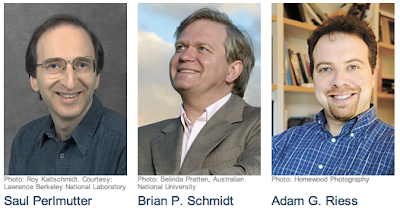 |
| Brian Greene |
"Any theory in physics stands or falls depending on whether its predictions agree with the data. But how can we verify the existence of other bubble universes?
Is the multiverse theory unscientific, because it cannot be tested, even in principle?
Surprisingly, observational tests of the multiverse picture may in fact be possible. A collision of our expanding bubble with another bubble in the multiverse would produce an imprint in the cosmic background radiation—a round spot of higher or lower radiation intensity. A detection of such a spot with the predicted intensity profile would provide direct evidence for the existence of other bubble universes. The search is now on, but unfortunately there is no guarantee that a bubble collision has occurred within our cosmic horizon."
This is the point that Brian Greene spends 1 minute making (@16 mins 45 s) http://www.ted.com/talks/lang/en/brian_greene_why_is_our_universe_fine_tuned_for_life.html & http://blog.ted.com/2012/02/28/the-multiverse-in-three-parts-brian-greene-at-ted2012/ (video transcript)
"explaining how it might be able to actually detect OTHER universes because of temperature differences in the cosmic macro-background radiation. Could we ever confirm the existence of other universes?
Brian Greene says
'The Big Bang would have been so intense that as space stretched, tiny quantum jitters would have stretched from the micro to the macro world, creating a distinctive fingerprint across space - which powerful telescopes have now observed.
Similarly, we might be able to detect if one universe collided with another, we might one day detect those temperature differences."
Greene published 'The Hidden Reality: Parallel Universes and the deep laws of the cosmos' in 2011 and the Penguin paperback in Feb 2012 http://www.amazon.co.uk/The-Hidden-Reality-Parallel-Universes/dp/0141029811/ref=sr_1_1?s=books&ie=UTF8&qid=1335814001&sr=1-1

